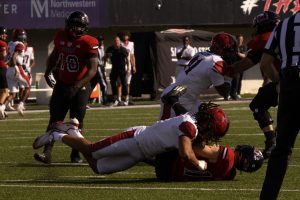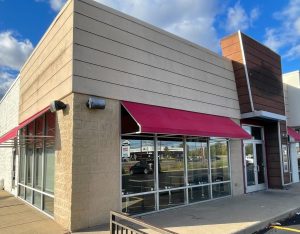Conference studies injuries, accidents
February 6, 1987
In an effort to discover ways of preventing injuries that occur in public places, a conference on injury in America will be held Feb. 16-19 in Atlanta to discuss beginning research programs and centers for injury control.
Tom Leamon, NIU chairman of industrial engineering, will speak on the behavioral aspects of injury as part of a national initiative to discover why people have accidents and what can be done to prevent it. The conference is titled “A New Approach to an Old Problem.”
Leamon said his topic of discussion, ergonomics, deals with such human aspects as strength, height, age and behavior and how these aspects play a part in human accidents. “Many, if not all, accidents have a human factor. The basis of ergonomics is how humans react (during accidents),” Leamon said.
This conference is a “major federal effort” to reach two main goals: to begin research projects on human injury and to develop centers on injury control, Leamon said. Organizations involved include the Department of Health and Human Services, the Public Health Services for the Center of Disease Control, the U.S. Department of Transportation and the National Highway Safety Administration.
“This conference is the focal step for getting this (the projects and centers) off the ground,” Leamon said.
Leamon said human accidents which result in injury and occur in public and work places are a “huge economic aspect.”
“Falling, you would think, is straight forward, but it’s not. Over 4,000 people will die in public places this year from falling. Most falls happen five feet off the ground. They don’t have to fall from the top of buildings,” he said.
Leamon said, “The conference will address a broad spectrum of research and programatic issues in injury control designed to provide … information on injury prevention for establishing local health agencies, academics (and) research.”
Political figures, such as U.S. Secretary of Transportation Elizabeth Dole and Atlanta’s Mayor Andrew Young, will speak at the conference. Issues discussed will include the aspects of behavior, costs of injuries, intervention of human accidents, the effects of alcohol and drug abuse on accidents and sessions on funding for accident research, Leamon said.
“People fall all the time and if you don’t know the reason why people fall, you can’t know how to reduce the number of accidents,” Leamon said.
One example of research being done is to find out why older people fall more than younger people do, Leamon said. He offered some possible reasons such as weakening eyesight or bad coordination. He added that ways of solving this problem might include shorter steps on staircases or flatter surfaces. Decisions on what to do to solve this problem cannot be identified unless research is done to find the cause of the problem, he said.
Leamon said he works with the National Institution for Occupational Safety and Health (NIOSH) which is a subgroup of the Center for Disease Control. He has visited corporations and industries for NIOSH concerning on-the-job injuries and the health of the worker.
Leamon had worked in coal mining, glass manufacturing, photographic manufacturing and food processing before coming to academics, he said. He also has served as an expert witness in cases involving work-related injuries.
Leamon’s most recent work included a presentation at Grant Hospital in Chicago and lectures in Albany, Long Island and DesMoines.






